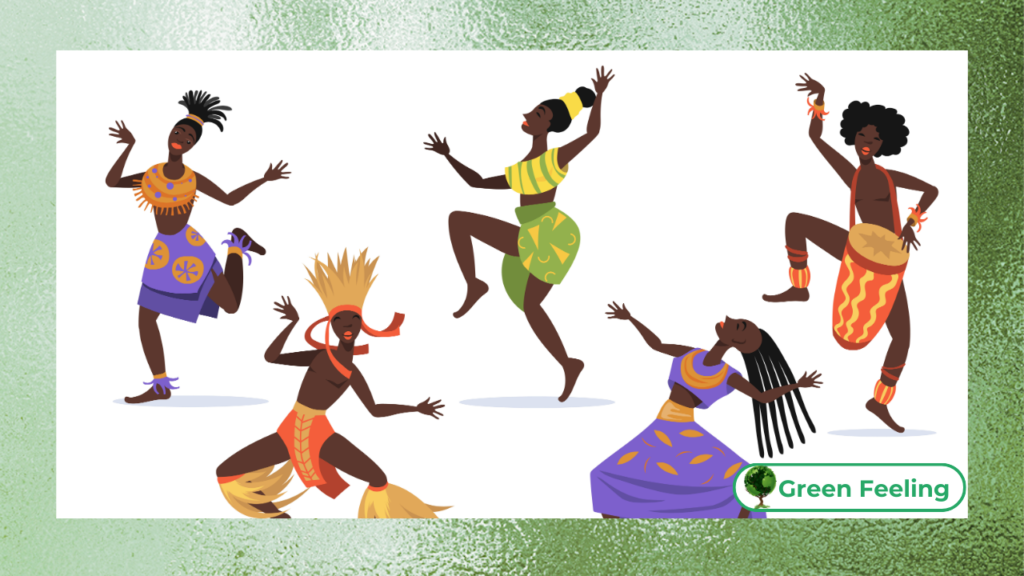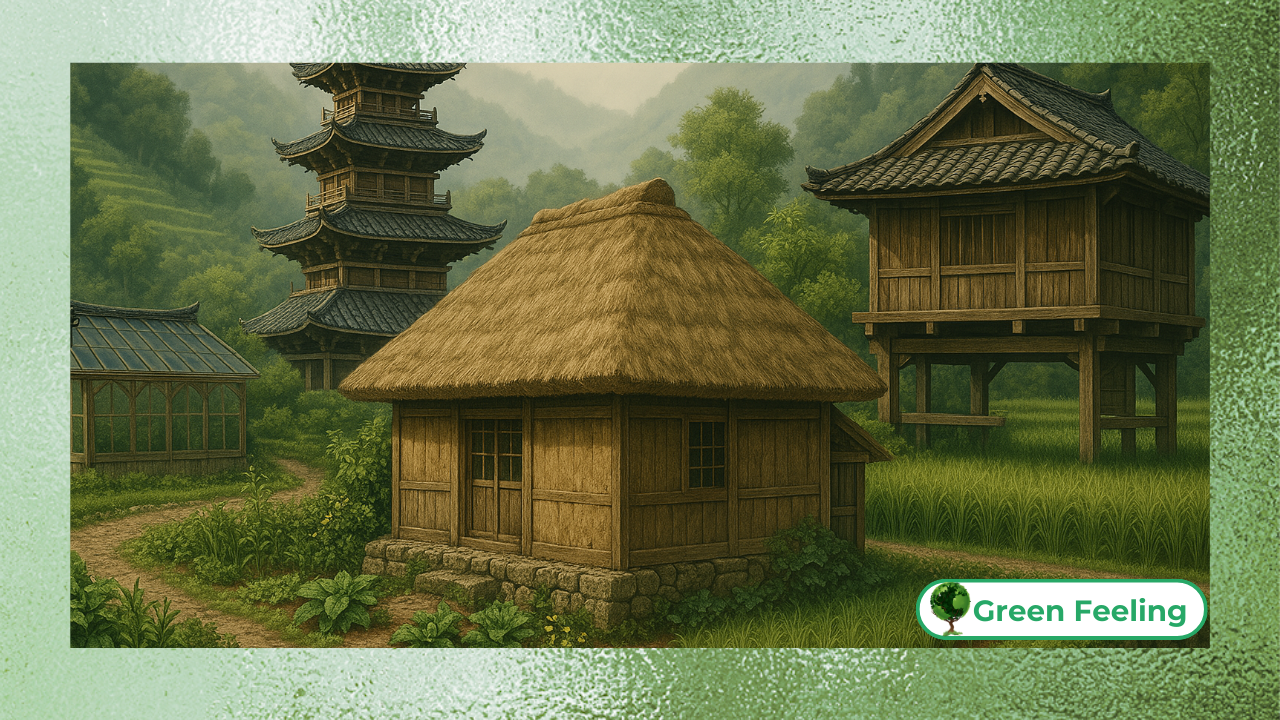Dance in African Cultures: Rhythms, Tradition, and Cultural Sustainability
Dance is an integral part of African cultures, serving as a vibrant expression of identity, spirituality, and community.

Across the continent, traditional dances are deeply rooted in history, reflecting the values, beliefs, and daily lives of diverse communities.
Beyond their cultural significance, these dances also play a crucial role in preserving traditions and promoting cultural sustainability.
This article explores the rhythms, traditions, and sustainability of African dance, highlighting its importance in maintaining cultural heritage and fostering unity.
The Heartbeat of African Cultures
Dance in Africa is more than just movement; it is a language that communicates stories, emotions, and shared experiences.
From the energetic rhythms of West African drumming to the graceful movements of Southern African dances, each style carries a unique cultural narrative. These dances are not only performed for entertainment but also serve as a means of education, spiritual connection, and social cohesion.
In a rapidly changing world, traditional African dances face the challenge of preserving their authenticity while adapting to modern influences.
However, they remain a powerful tool for cultural sustainability, ensuring that the wisdom and traditions of the past are passed down to future generations. This article delves into the rhythms, traditions, and sustainability of African dance, celebrating its enduring legacy.
“Dance is the hidden language of the soul, and in Africa, it is the heartbeat of the people.” – Martha Graham, Dancer and Choreographer
Rhythms and Movements: The Essence of African Dance
African dance is characterized by its dynamic rhythms, intricate movements, and deep connection to music. Each dance style is closely tied to specific cultural contexts, reflecting the history, environment, and values of the community.
The rhythms of African dance are often created by traditional instruments like drums, xylophones, and rattles, which set the tempo and guide the dancers’ movements. These rhythms are not just background music; they are an integral part of the dance, dictating the flow and energy of the performance.
West African Dance: Energy and Celebration
West African dance is known for its high energy and vibrant rhythms, often accompanied by drumming and singing.
Dances like the Kuku from Guinea and the Agbekor from Ghana are performed during celebrations, rituals, and communal gatherings. These dances emphasize unity and collective participation, reinforcing the importance of community in African cultures.
The Kuku, for example, is a harvest dance that celebrates the abundance of the land and the hard work of the people. The Agbekor, on the other hand, is a warrior dance that tells the story of battles and bravery, preserving the history and values of the community through movement and music.
+ 10 Interesting Facts About Chilean Culture
Southern African Dance: Grace and Storytelling
In Southern Africa, dances such as the Gumboot Dance from South Africa and the Muchongoyo from Zimbabwe are characterized by their grace and storytelling elements. These dances often depict historical events, daily activities, or spiritual beliefs, serving as a living archive of cultural knowledge.
The Gumboot Dance, originally performed by miners, uses the rhythmic stomping of boots to communicate and express resilience in the face of adversity.
The Muchongoyo, a traditional dance of the Ndau people, is performed during celebrations and rituals, with dancers using intricate footwork and gestures to tell stories of their ancestors and their connection to the land.
Read More: https://momaa.org/the-art-of-movement-african-artists-and-dance/
East African Dance: Spirituality and Ritual
East African dances, such as the Maasai Adumu (jumping dance) and the Bwola from Uganda, are deeply spiritual and ritualistic. They are performed during ceremonies, rites of passage, and communal events, connecting participants to their ancestors and the divine.
The Adumu, performed by Maasai warriors, is a test of strength and endurance, with dancers jumping high into the air to demonstrate their vitality and readiness for adulthood.
The Bwola, a royal dance of the Acholi people, is performed during coronations and other important events, symbolizing unity and the continuity of tradition.
+ African Mythology: Spirits of the Earth and Mystical Creatures
Tradition and Cultural Sustainability: Preserving Heritage Through Dance
African dance is a vital tool for cultural sustainability, ensuring that traditions are preserved and passed down through generations. In many communities, dance is taught from a young age, with elders playing a crucial role in transmitting knowledge and skills.
The oral tradition of storytelling is often intertwined with dance, creating a rich tapestry of cultural expression that is both educational and entertaining. Through dance, communities are able to maintain a connection to their ancestors and their cultural roots, even in the face of modernization and globalization.
Oral Tradition and Dance
African dance is often intertwined with oral traditions, such as storytelling, proverbs, and songs. This combination creates a holistic learning experience, where cultural values and history are conveyed through movement and music.
For example, the Griots of West Africa use dance and music to preserve and share the history of their people. These storytellers are revered for their ability to keep the past alive, using dance as a medium to pass down knowledge from one generation to the next.
The integration of dance and oral tradition ensures that cultural heritage is not only remembered but also experienced and felt by the community.
Dance as a Tool for Education
In many African societies, dance is used as a form of education, teaching young people about their heritage, social norms, and responsibilities. Through dance, they learn about their ancestors, the environment, and the importance of community.
For instance, the Initiation Dances of the Xhosa people in South Africa are performed during rites of passage, teaching young men and women about their roles in society and their connection to the natural world.
These dances are not just performances; they are lessons in cultural values and social responsibility, ensuring that the next generation is equipped with the knowledge and skills to carry on their traditions.
Modern Adaptations and Global Influence
While traditional African dances remain deeply rooted in their cultural contexts, they have also evolved to adapt to modern influences. Contemporary African dance styles, such as Afrobeat and Afrobeats, blend traditional rhythms with modern music, creating a dynamic fusion that resonates with global audiences.
This adaptation ensures the relevance and sustainability of African dance in a changing world.
Artists like Fela Kuti and Burna Boy have brought African rhythms to the global stage, introducing new audiences to the richness of African culture. These modern adaptations not only preserve traditional elements but also create new opportunities for cultural exchange and innovation.
+ Music and Nature: How Soundtracks Can Echo Sustainability in Cinema
Table: Traditional African Dances and Their Cultural Significance
| Dance | Region | Cultural Significance |
| Kuku | West Africa | Celebration, unity, and community |
| Agbekor | Ghana | Warrior dance, storytelling, and history |
| Gumboot Dance | South Africa | Labor, resilience, and cultural pride |
| Muchongoyo | Zimbabwe | Storytelling, history, and social cohesion |
| Adumu (Jumping Dance) | East Africa (Maasai) | Rites of passage, spirituality, and strength |
| Bwola | Uganda | Royal ceremonies, unity, and tradition |
Conclusion:
African dance is a powerful expression of cultural identity, spirituality, and community. Its rhythms and movements tell the stories of the past, celebrate the present, and inspire the future. As a tool for cultural sustainability, dance ensures that the traditions and values of African cultures are preserved and passed down to future generations. The integration of dance with oral traditions, education, and modern adaptations highlights its versatility and resilience in the face of change.
In a world where globalization and modernization often threaten cultural heritage, African dance stands as a testament to the resilience and creativity of its people. By embracing both tradition and innovation, African dance continues to thrive, connecting communities and fostering a sense of unity and pride.
Its enduring legacy reminds us of the importance of preserving cultural diversity and celebrating the richness of human expression. Through dance, Africa’s cultural heritage remains alive, vibrant, and relevant, inspiring future generations to honor their roots while embracing the possibilities of the future.
References:
GRAHAM, Martha. Blood Memory: An Autobiography. Doubleday, 1991.
Additional Sources:
- The Role of Dance in African Cultures. Available at: https://www.britannica.com/topic/African-dance. Accessed on: March 1, 2025.
- Gumboot Dance: A Symbol of South African Resilience. Available at: https://www.sahistory.org.za. Accessed on: March 1, 2025.
- Maasai Adumu: The Jumping Dance of East Africa. Available at: https://www.maasai-association.org. Accessed on: March 1, 2025.






